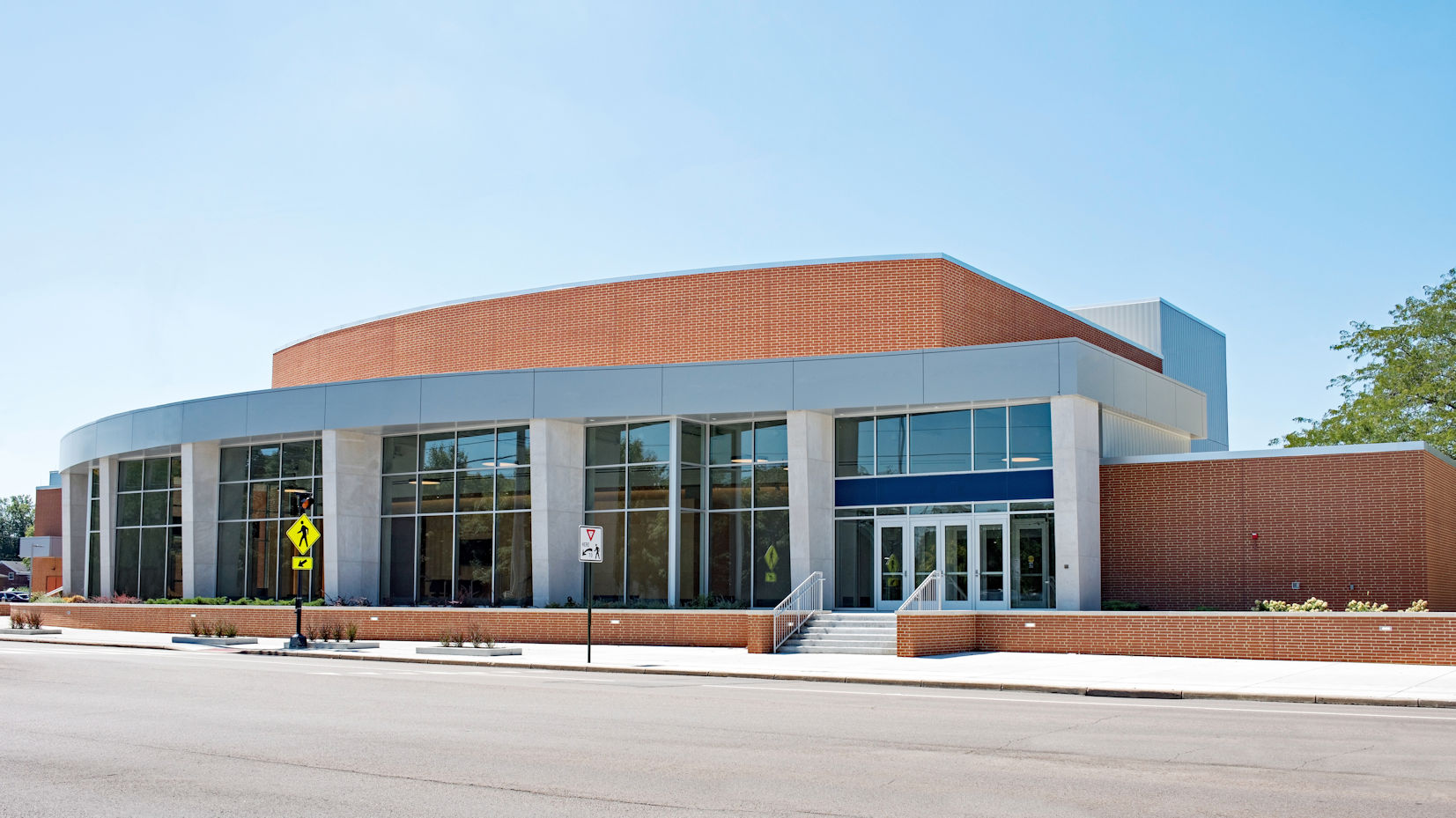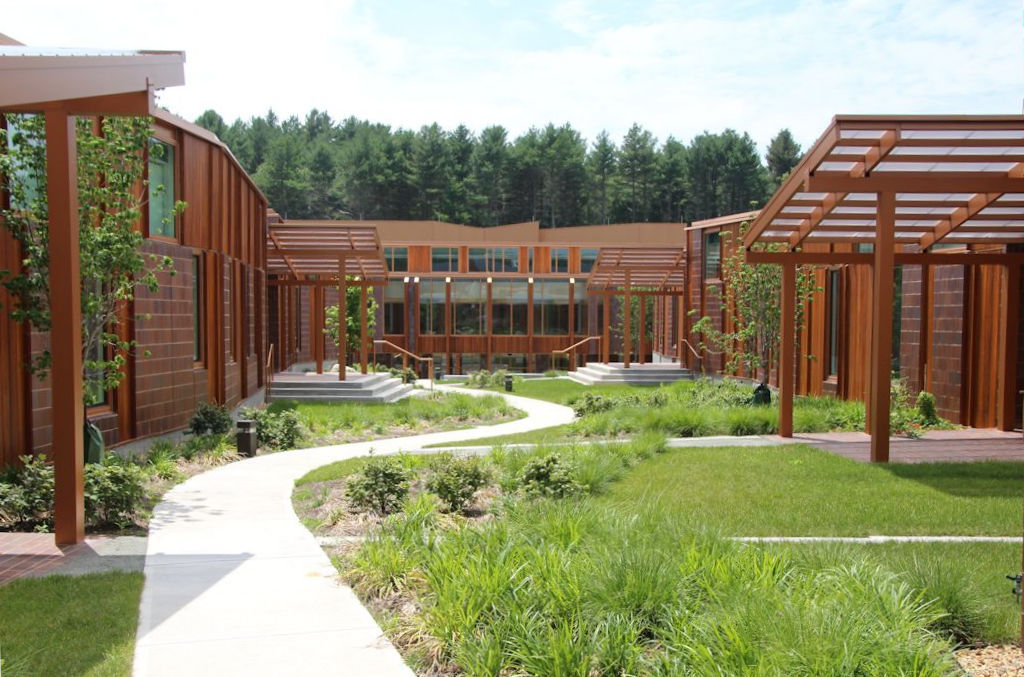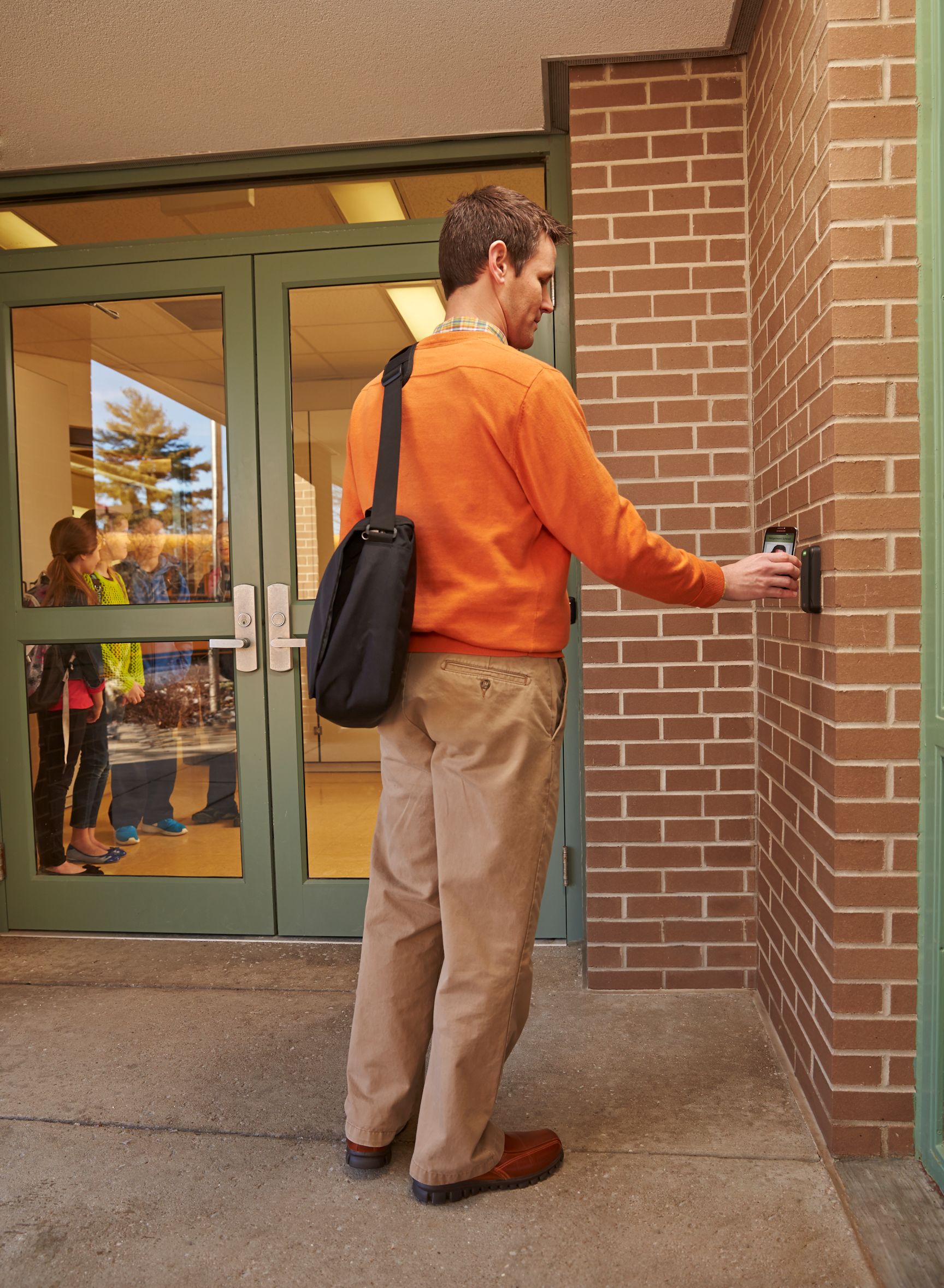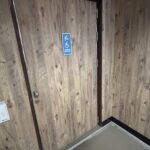My next Decoded article focuses on safety requirements to consider while addressing school security. And while we’re on the subject, Safe and Sound Schools is conducting their 4th survey on the National State of School Safety, and I invite you to participate in this important research. Please share your insight by Monday, April 5th.
This post will be published in the May 2021 issue of Doors & Hardware

 With many students back in the classroom, school administrators will be focused on the physical security of school buildings and campuses. It is absolutely crucial to the safety of students, teachers, and staff that when security measures are implemented, the requirements for egress, fire protection, and accessibility are also considered.
With many students back in the classroom, school administrators will be focused on the physical security of school buildings and campuses. It is absolutely crucial to the safety of students, teachers, and staff that when security measures are implemented, the requirements for egress, fire protection, and accessibility are also considered.
To ensure that these safety mandates are met, there are adopted codes and standards in almost every US state which clearly define what is allowed or required. These code requirements help to protect building occupants from fire, as well other types of emergencies and hazards. In addition, the accessibility standards establish the criteria for buildings and elements to be accessible to and usable by people with physical disabilities.
The need for safety does not negatively impact security measures, if the two are considered in tandem. To aid in addressing both safety and security for doors in educational occupancies, this article summarizes some of the considerations for each of the most common types of openings.
Main Entrance – At the main entrance of the building, many school districts have incorporated a security vestibule to guide visitors to the office before allowing access to the rest of the school building. Although these vestibules are sometimes incorrectly referred to as “man-traps”, they do not trap anyone if designed correctly. The exterior and vestibule doors should be locked on the access side but must allow free egress. This area is typically monitored at all times with access granted by school personnel – often using an intercom/camera system and electrified hardware. This is a critical point of security, but egress is also important; in an emergency many building occupants will instinctively head for the door they used to enter.
Secondary Entrance – Other entrances may not be in close proximity to the main office and may not have constant supervision. For example, the staff entrance from the parking lot or the door used for playground access are often located in more remote areas of the building. These doors should be kept locked to prevent unauthorized access, and an access control reader can increase security by limiting key distribution. Secondary entrances must allow egress if the doors are required exits or are provided for egress purposes.
Emergency Exit – Some exits are intended only for egress and not for building access; in many cases these doors exit directly from classrooms to the exterior. These doors should not have the ability to be left unlocked on the access side – they should be locked at all times. Emergency exits often have no outside trim, but a key cylinder on the exterior may be helpful to allow access for first responders in an emergency. Where unauthorized egress is a concern, exit alarms may be installed to monitor use of the door. Beginning with the 2018 edition of the International Building Code (IBC) and International Fire Code (IFC), delayed egress locks are allowed on classroom doors in educational occupancies, serving classrooms with a calculated occupant load of less than 50 people.
Classroom – There has been much talk about ways to add security to classroom doors, but the bottom line is that many of the retrofit security methods (ex. classroom barricade devices) do not meet the requirements of the model codes and referenced standards for safety and/or accessibility. Traditional locksets have been proven to provide the needed level of security and also allow free egress. One of the most frequently asked questions is which lock function to use, and that depends on the preferences of the school district. It’s important that the lock can be locked without opening the door, to avoid exposing the teacher to danger while securing the classroom during an active-shooter event. The most common mechanical functions used for schools are locked from the inside using either a key, thumbturn, or push button to lock the outside lever; some schools have locks that are always locked on the outside. In most jurisdictions, these doors must unlock for egress with one releasing motion, using operable hardware mounted between 34 and 48 inches above the floor. The hardware must require no tight grasping, pinching, or twisting of the wrist, and no key, tool, special knowledge, or effort for egress. In addition, classroom doors must be able to be unlocked from the outside with a key or other approved means, to allow authorized access to the classroom.
Between Classrooms – If one classroom entrance door is locked and the door to the adjoining classroom is not, the door between the classrooms becomes a critical point for securing the locked classroom. If the calculated occupant load of a classroom is 50 people or more, the room will typically require a second exit – this second exit may be the door between classrooms. If the connecting door is not required for egress, it may be secured unless the Authority Having Jurisdiction (AHJ) objects. Some classrooms may be connected by a shared workroom. When securing the workroom doors to limit passage between classrooms, care must be taken to maintain a code-compliant path of egress out of the workroom.
Assembly Space – Areas such as the gymnasium, cafeteria, auditorium, and library can present challenges for securing doors from the inside, as egress doors serving these spaces are required to be equipped with panic hardware to accommodate the large occupant load. Some types of panic hardware can be locked from inside of the space to prevent access, while others cannot. If there is a bank of doors, it may make sense to keep most of the doors locked on the outside, so the remaining doors can be locked quickly if an intruder situation occurs. Doors leading from these assembly spaces to the exterior are typically kept locked on the outside, and all doors serving these areas must always allow for code-compliant egress.
 Courtyard – Some schools have a central enclosed courtyard – often to provide natural light to the interior rooms. If the enclosed courtyard is an occupiable space with a calculated occupant load of 50 people or more, the egress route will typically pass through the interior of the school, with doors swinging in the direction of egress equipped with panic hardware. Past editions of the model codes did not include a way to lock these doors to prevent an unauthorized person from climbing over the roof into the courtyard and accessing the school. However, the 2021 edition of the IBC includes a new section which allows these doors to be equipped with double-cylinder deadbolts if certain criteria are met. The section applies to exterior areas with an occupant load of less than 300 people, and requires a telephone or two-way communication system, signage, a vision panel in the door, and a key-operated lock that is readily distinguishable as locked.
Courtyard – Some schools have a central enclosed courtyard – often to provide natural light to the interior rooms. If the enclosed courtyard is an occupiable space with a calculated occupant load of 50 people or more, the egress route will typically pass through the interior of the school, with doors swinging in the direction of egress equipped with panic hardware. Past editions of the model codes did not include a way to lock these doors to prevent an unauthorized person from climbing over the roof into the courtyard and accessing the school. However, the 2021 edition of the IBC includes a new section which allows these doors to be equipped with double-cylinder deadbolts if certain criteria are met. The section applies to exterior areas with an occupant load of less than 300 people, and requires a telephone or two-way communication system, signage, a vision panel in the door, and a key-operated lock that is readily distinguishable as locked.
Stairwell – During an active-shooter event, limiting the intruder’s travel through the school can save lives. Interior stairwell doors can be locked on the stair side to help prevent access to upper floors, but stairwell reentry requirements must be met. These requirements are intended to allow building occupants to leave a stairwell if it becomes compromised during a fire, through doors that are normally locked. Although under certain circumstances NFPA 101 – Life Safety Code allows interior stair doors to be locked on the stair side with mechanical locks, the IBC requires all lockable interior stair doors to have the capability of remote unlocking. In most jurisdictions, these locks must be fail-safe electrified locks, or fail-safe electrified trim for fire exit hardware. This will allow the doors to be locked quickly if necessary but will ensure that the stair doors function as required by code.
Cross-Corridor – Many schools have cross-corridor doors separating wings or halls; this is another location where unauthorized access can be controlled. It’s important to remember that these doors must allow free egress at all times – only the access side of the doors can be locked. A common application is for the doors to be equipped with panic hardware, with lever trim on the access side that is kept locked at all times. The doors are held open by magnetic holders, which will release and allow the doors to close when power is cut via a signal from the office or the security system and in some cases the fire alarm system. Because the doors have locked lever handles on the access side, the doors will be locked as soon as they are in the closed and latched position.
Electronic Access Control – There are many benefits of using an access control system in an educational environment. From access via electronic credential to rapid lockdown, these systems can provide the needed security as well as convenience, monitoring, and code-compliance. Many school districts are now incorporating electronic access control into their security planning, whether they begin with the main entrance or install a campus- or district-wide system.
Glass and Glazing – The most secure doors and hardware can be compromised by adjacent glazing, if the glass does not provide sufficient protection against impact. Various glazing products are available for new or retrofit applications, as well as films that can be added to existing glass. Consideration should also be given to the size and position of vision lights and sidelights to limit access through the window opening to the hardware on the egress side, which could allow the intruder to open the door.
Releasing Motion(s) – In jurisdictions where either the 2018 or 2021 edition of NFPA 101 has been adopted, classroom doors in existing schools are allowed to have hardware that requires two releasing motions to exit. This change was made in order to allow schools to add a deadbolt for extra security if necessary. However, the IBC and IFC, adopted in most US states, require classroom doors in new and existing schools to be unlatched for egress with one releasing motion. Traditional locksets, operable with one releasing motion, provide the necessary security as well as safety.
Conclusion
There are many resources available to help ensure that school safety is not compromised by school security efforts. During an unpredictable active-shooter event, free egress and fire protection are crucial. In any jurisdiction, the adopted codes should be consulted for specific requirements, and the AHJs can assist if needed. In addition, the following organizations have developed informational guidelines and recommendations to help school districts maintain a balance between safety and security.
Builders Hardware Manufacturers Association (BHMA)
Door Security and Safety Foundation (DSSF)
iDigHardware.com/schools
International Code Council (ICC)
National Association of State Fire Marshals (NASFM)
National Fire Protection Association (NFPA)
Partner Alliance for Safer Schools (PASS)
Safe and Sound Schools
You need to login or register to bookmark/favorite this content.







Lori,
With respect to the locking of interior stairway doors on the staircase side, wouldn’t you still. E required to leave at least two doors unlocked to allow re-entry where more than 4 stories above grade?
Hi Donnie –
The IBC requires all interior stairway doors that are locked on the stair side to allow reentry – this can be via electrified locks or passage sets. NFPA 101 allows stairs serving 4 stories or less to be locked with mechanical locks on the stair side. This does not apply to the stair discharge – that can not be locked on the stair side. NFPA 101 also allows selected reentry, which allows some doors to be locked and others to allow reentry. The IBC is more stringent on this issue.
Here is a video about stairwell reentry that might help: https://idighardware.com/2016/08/stairwell-reentry-video/.
– Lori
I am looking for some kind of code for school outside play ground gate
Hi Ron –
If you’d like to send me more information by email I will try to help. lori.greene@allegion.com
– Lori